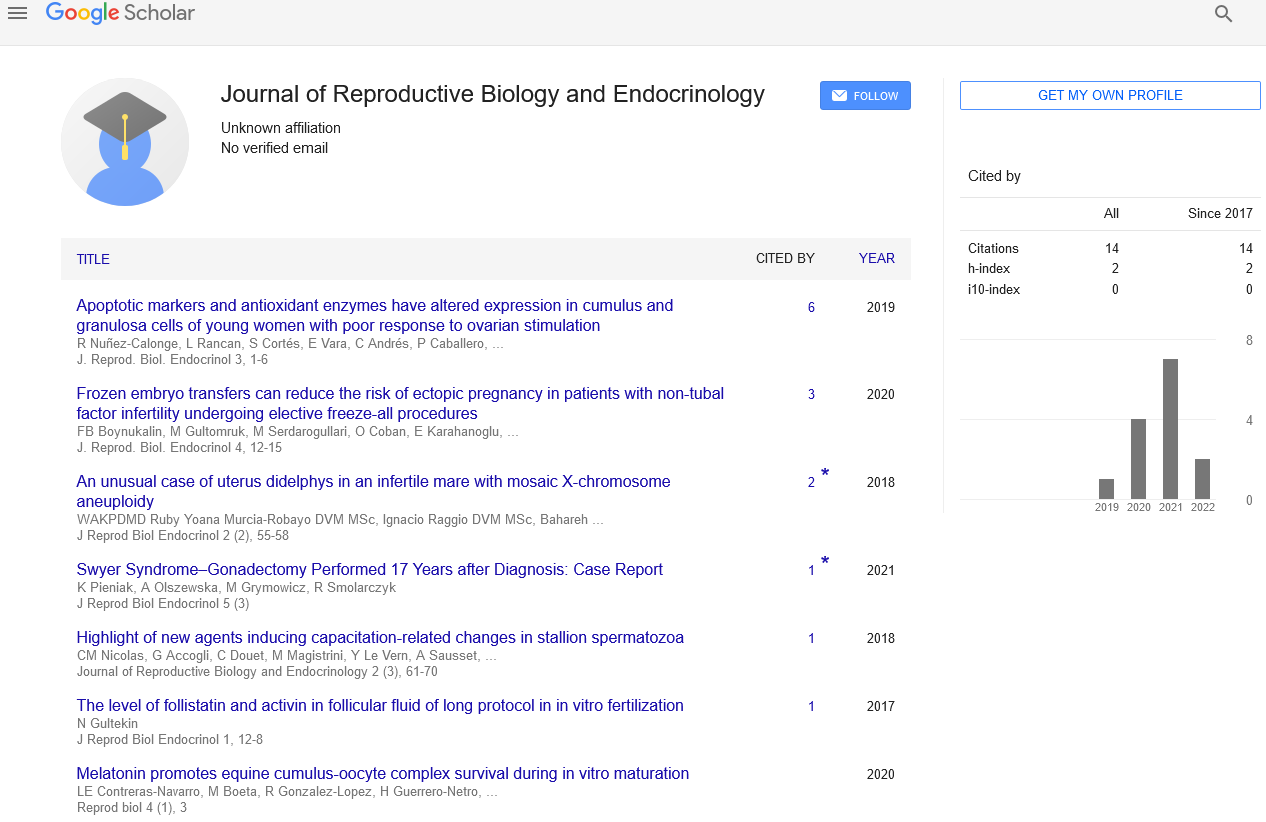Premature ovarian failure and its effect
Received: 19-Dec-2022, Manuscript No. PULJRBE-22-5925; Editor assigned: 22-Dec-2022, Pre QC No. PULJRBE-22-5925 (PQ); Accepted Date: Mar 27, 2023; Reviewed: 06-Jan-2023 QC No. PULJRBE-22-5925 (Q); Revised: 20-Mar-2023, Manuscript No. PULJRBE-22-5925 (R); Published: 28-Mar-2023, DOI: 10.37532/PULJRBE.2023.7(1).2.
Citation: Lucas P. Premature ovarian failure and its effect. J Reprod Biol Endocrinol 2023;7(1):1.
This open-access article is distributed under the terms of the Creative Commons Attribution Non-Commercial License (CC BY-NC) (http://creativecommons.org/licenses/by-nc/4.0/), which permits reuse, distribution and reproduction of the article, provided that the original work is properly cited and the reuse is restricted to noncommercial purposes. For commercial reuse, contact reprints@pulsus.com
Abstract
Amenorrhea, increased gonadotrophin levels, and hypoestrogenism are symptoms of Premature Ovarian Failure (POF) in women under the age of 40. Due to improved survival after cancer therapy, it is becoming more common and hassignificant physical and psychological repercussions. Despite this, the illness is still not well understood. Here, we examine the presentation and examination of POF, talk about recent developments in the treatment of affected women, and make recommendations for how to expand our understanding of the disorder. One percent of women experience Premature Ovarian Failure (POF), which results in hypergonadotrophic hypogonadism. Most of the time, the root cause goes undiscovered. The recognised reasons include: Genetic anomalies, which may include X chromosome or autosome abnormalities. Numerous genes have been investigated as potential POF causing candidates; however few have been shown to have obvious causal alterations. The found correlation between POF andother autoimmune diseases pointsto autoimmune ovarian damage. Numerous investigations have found anti- ovarian antibodies in POF, although their specificity and potential for pathogenesis are under debate. Iatrogenic after surgery, radiotherapy, or chemotherapy treatments, as in cancers.
Keywords
Autoimmune ovarian damage; Environmental factors; Genetic aberrations; Hormone replacement; Premature ovarian failure
Introduction
In Western populations of women, menopause typically occurs at the age of 51. Amenorrhoea that develops as a result of the ovarian system ceasing to function before the age of 40 is referred to as Premature Ovarian Failure (POF) or premature menopause. The diagnosis is supported by increased FSH levels in the menopausal range (often >40 IU/l) found at least twice, a few weeks apart from one another. In addition to primary or secondary amenorrhoea, infertility, sex steroid insufficiency, and increased gonadotropins, women with POF have anovulation, hypoestrogenism, and anovulation. About 1% of women are affected by the condition, which strikes 10%-28% of women with primary amenorrhoea and 4%-18% of those with secondary amenorrhoea.
Description
Amenorrhea, increased gonadotropins, and a lack of sex hormones are the symptoms of Premature Ovarian Failure (POF), which affects women under the age of 40. Due to the signs and long term implications of sex steroid insufficiency, POF causes significant physical and psychological effects. Furthermore, the concomitant decrease in fertility is a distressing diagnosis for many young women. Despite this, there are still a lot of gaps in our understanding of the illness. Its underlying etiology and ideal treatment plans are still not well understood, and there is disagreement over its nomenclature. It has been suggested that the phrases "premature ovarian dysfunction" or "primary ovarian insufficiency" be used instead of the word "failure" because they more accurately describe the condition's unpredictable ovarian function.
The prenatal and tiny antral follicles granulosa cells generate the glycoprotein known as AMH. The class of peptide growth and growth differentiation factors includes AMH. The cycle day has no bearing on AMH levels. It is a very effective marker for reproductive decline, including early ovarian failure, because its concentrations fall with age. AMH levels are hardly detectable or extremely low in POF patients. AMH levels are much higher in women with Polycystic Ovary Syndrome (PCOS), a disorder marked by an excessive number of ovarian follicles (however, there is no folliculogenesis).
Conclusion
About 1% of women experience premature ovarian failure, which causes menopause to occur before the age of 40. Hypoestrogenism and insufficient ovulation (infertility) are the key issues. Genetic susceptibility, autoimmune and enzymatic problems, infections, and iatrogenic causes are a few possible causes of POF
POF is a fatal diagnosis for women of reproductive age. The diagnosis is rather simple. However, it has detrimental effects on one's health, including anxiety, infertility, osteoporosis, autoimmune diseases, ischemic heart disease, and a higher risk of death.
Immediate management should be implemented to avoid long term effects. The cornerstone of management is estrogen treatment. Studies on postmenopausal estrogen therapy shouldn't be utilised to estimate the treatment's hazards for these young women.





